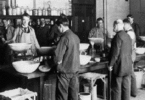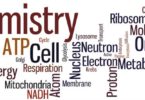What is the study of histology primarily concerned with?
(a) The study of cells
(b) The study of organs
(c) The study of tissues
(d) The study of diseases
Red pulp and white pulp are histological structure found in
(a) Tooth
(b) Spleen
(c) Bone
(d) Liver
Which of the following tissues is responsible for transmitting electrical signals in the body?
(a) Epithelial tissue
(b) Connective tissue
(c) Nervous tissue
(d) Muscle tissue
Which of the following staining techniques is commonly used in histology tests?
(a) Gram staining
(b) Hematoxylin and eosin staining
(c) Acid-fast staining
(d) Periodic acid-Schiff staining
Which technique is commonly used to prepare tissue samples for histopathological examination?
(a) Staining
(b) Radiography
(c) Genetic sequencing
(d) Ultrasound imaging
Which type of histology focuses on the microscopic examination of tissues to diagnose diseases?
(a) Comparative
(b) Molecular
(c) Clinical
(d) Forensic
Related: heart questions and answers
Which technique is commonly used in Molecular histology to analyze gene expression in tissues?
(a) Immunohistochemistry
(b) Hematoxylin and eosin staining
(c) Fluorescence in situ hybridization (FISH)
(d) Mass spectrometry
Which type of tissue analysis is commonly used in Forensic histology to determine the cause of death?
(a) Blood analysis
(b) Hair analysis
(c) Toxicology analysis
(d) Gunshot residue analysis
What is the primary purpose of histological staining?
(a) To enhance tissue structure visibility
(b) To kill bacteria in the tissue
(c) To remove excess water from the tissue
(d) To measure tissue pH levels
Which type of tissue allows for voluntary movements of the body and is responsible for generating force?
(a) Epithelial tissue
(b) Connective tissue
(c) Nervous tissue
(d) Muscle tissue
What is a histopathology report?
(a) A record of laboratory test results
(b) A summary of surgical procedures performed
(c) A detailed analysis of tissue abnormalities observed under a microscope
Which type of tissue supports and connects different structures in the body?
(a) Epithelial tissue
(b) Connective tissue
(c) Nervous tissue
(d) Muscle tissue
Which scientist was the first to observe and describe cells in plant tissues?
(a) Robert Hooke
(b) Antonie van Leeuwenhoek
(c) Marcello Malpighi
(d) Rudolf Virchow
Which of the following techniques is commonly used to prepare tissue samples for examination?
(a) Microscopy
(b) Staining
(c) PCR analysis
(d) Radiography
What is the name for a small, thin slice of tissue that is mounted on a microscope slide for histological examination?
(a) Biopsy
(b) Specimen
(c) Smear
(d) Section
Which staining technique is commonly used in Clinical histology to enhance tissue visibility and distinguish cellular components?
(a) Hematoxylin and eosin staining
(b) Immunohistochemistry
(c) Periodic acid-Schiff staining
(d) Masson’s trichrome staining
Which of the following tissues lines the inner surfaces of organs and forms protective barriers?
(a) Epithelial tissue
(b) Connective tissue
(c) Nervous tissue
(d) Muscle tissue
Related: Polarization of Light Questions & Answers for exam
Which pathologist played a significant role in establishing histopathology as a medical discipline?
(a) Robert Hooke
(b) Antonie van Leeuwenhoek
(c) Marcello Malpighi
(d) Rudolf Virchow
Which type of microscope is commonly used to observe tissue samples?
(a) Electron microscope
(b) Light microscope
(c) Scanning probe microscope
(d) Confocal microscope
What is the primary purpose of a histology test?
(a) To diagnose genetic disorders
(b) To assess hormonal imbalances
(c) To examine tissue samples for abnormalities
(d) To evaluate blood cell counts
Related: One Dimensional Motion Unit Assessment Quiz
What is the primary purpose of Clinical histology?
(a) To study tissue development during embryogenesis
(b) To investigate the molecular and genetic aspects of tissues
(c) To diagnose and classify diseases based on tissue abnormalities
(d) To compare tissue responses to different medications
What is the name for the specialized technician who prepares tissue samples for histological examination?
(a) Histologist
(b) Histotechnologist
What is the primary goal of Comparative histology?
(a) To compare tissue responses to different medications
(b) To identify tissue abnormalities for disease diagnosis
(c) To understand tissue structure across different species
Which type of tissue lines the inner surfaces of organs and forms protective barriers?
(a) Epithelial tissue
(b) Connective tissue
(c) Nervous tissue
(d) Muscle tissue
Related: Phylum Porifera MCQs
Who is commonly regarded as the “father of modern histology”?
(a) Robert Hooke
(b) Antonie van Leeuwenhoek
(c) Marcello Malpighi
(d) Rudolf Virchow
What is the primary goal of histopathology?
(a) Diagnosis and classification of diseases
(b) Monitoring blood cell counts
(c) Evaluation of hormonal imbalances
(d) Assessing genetic disorders






